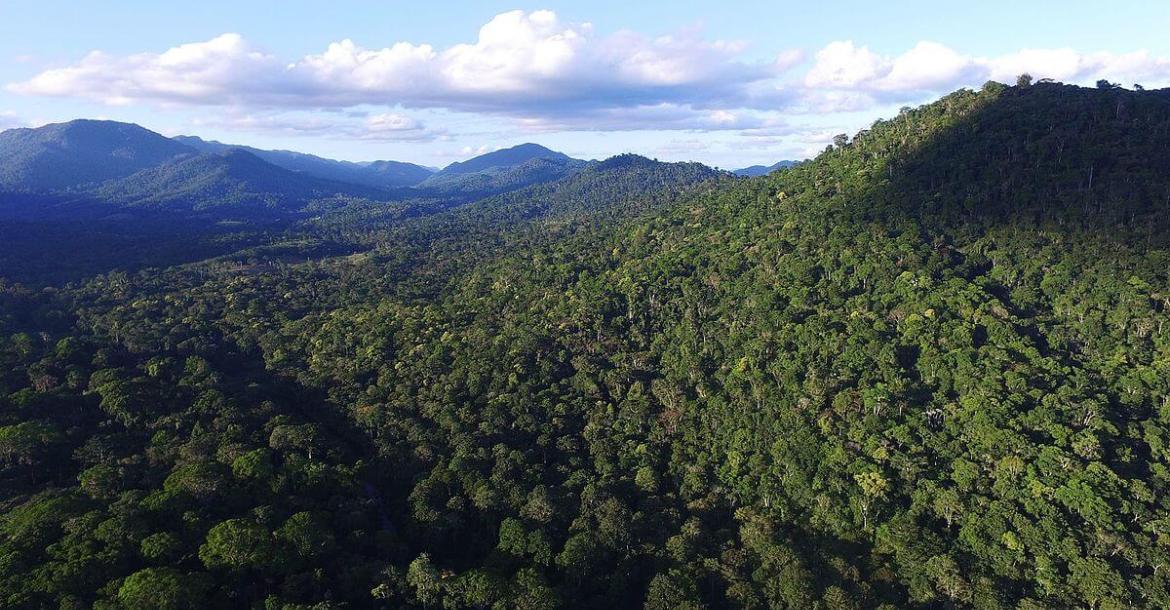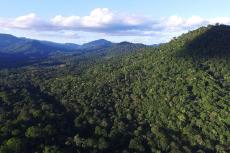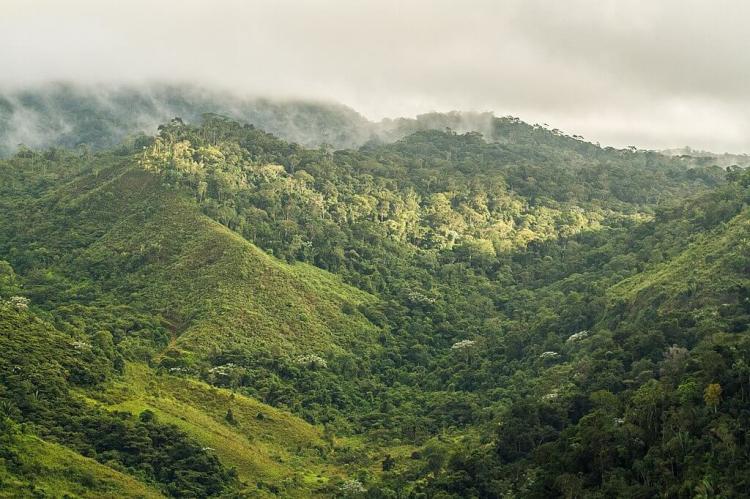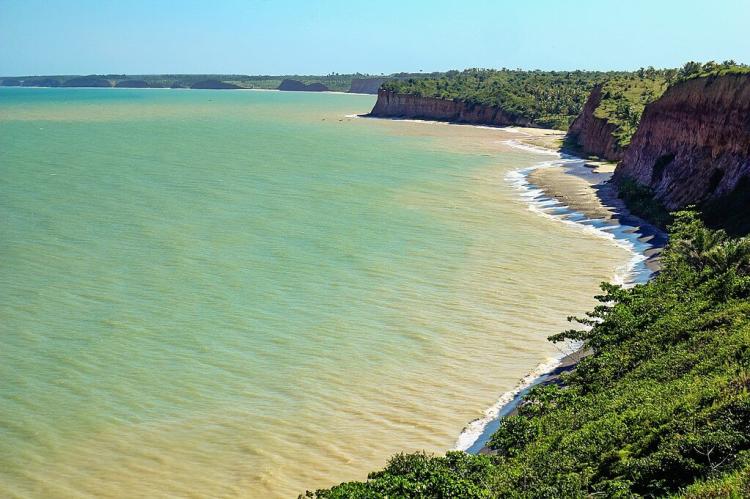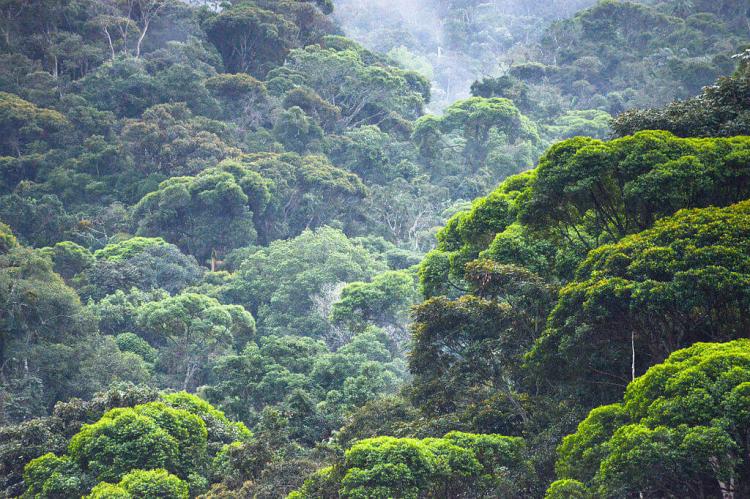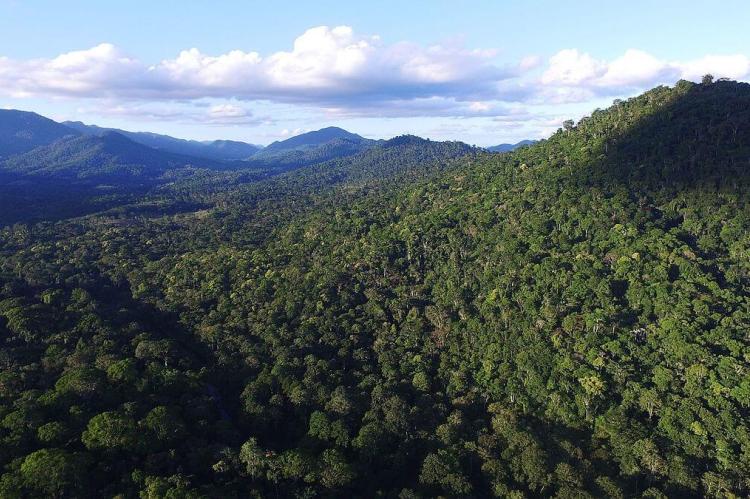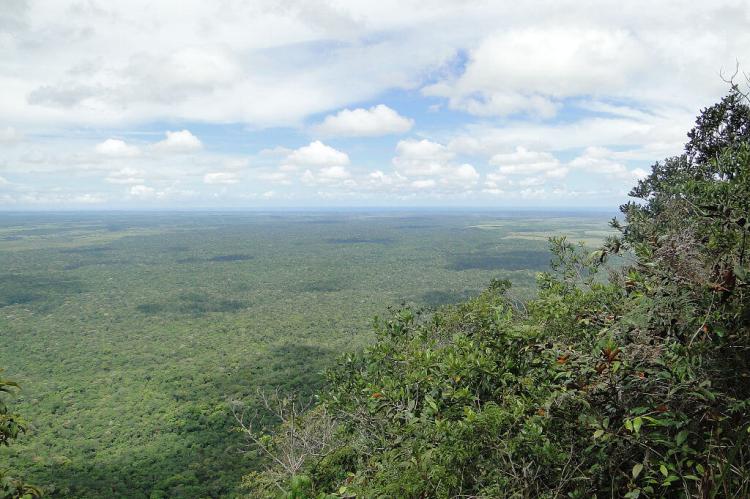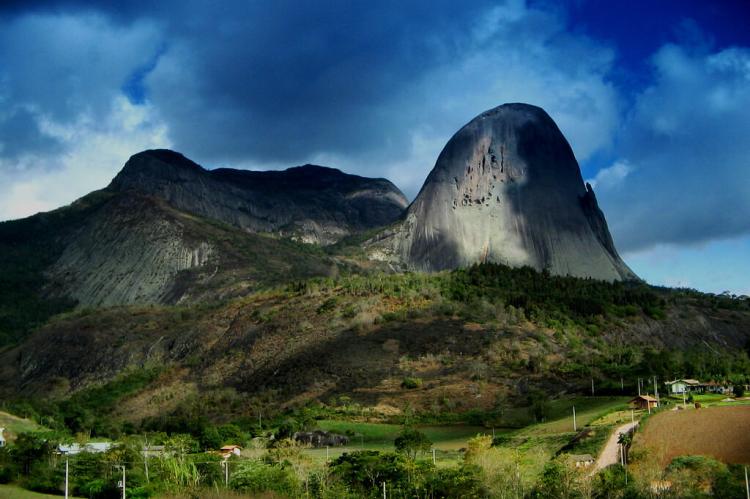Central Atlantic Forest Ecological Corridor: Preserving Brazil's Biodiversity Marvel
The Central Atlantic Forest Ecological Corridor is a remarkable and critically important conservation initiative in Brazil to connect and protect fragmented patches of the Atlantic Forest biome. This ecological corridor represents a vital lifeline for some of the world's most threatened and diverse ecosystems.
Central Atlantic Forest Ecological Corridor
Preserving Brazil's Biodiversity Marvel
The Central Atlantic Forest Ecological Corridor (CAFEC), the Corredor Ecológico da Mata Atlântica Central in Portuguese, is a remarkable and critically important conservation initiative in Brazil. This ecological corridor represents a vital lifeline for some of the world's most threatened and diverse ecosystems.
CAFEC is a large-scale conservation initiative in Brazil that aims to connect and protect fragmented Atlantic Forest (Mata Atlântica) biome patches. Approximately 260 km (160 mi) long and 100 km (62 mi) wide, the corridor spans over 8.6 million hectares (33,200 sq mi) across Espírito Santo and Bahia and is home to a wide range of biodiversity, including many endangered and threatened species.
This visionary ecological corridor is a lifeline, pivotal in preserving some of the planet's most imperiled and diverse ecosystems. By strategically linking these fragmented areas, the corridor contributes significantly to the overarching mission of ensuring the longevity and resilience of the globally significant and endangered tropical rainforest ecosystem.
Geography and Location
The Central Atlantic Forest Ecological Corridor is situated in the southeastern part of Brazil, primarily within the states of São Paulo and Rio de Janeiro, extending into parts of Minas Gerais and Espírito Santo. This region is part of the larger Atlantic Forest biome, one of the world's most diverse and endangered tropical rainforest ecosystems.
To promote biodiversity conservation, the corridor encompasses interconnected protected areas, private reserves, and indigenous territories.
Protected Areas
The CAFEC is a vital initiative to help protect the Atlantic Forest and its unique biodiversity. The protected areas within the CAFEC play a key role in achieving this goal by providing a haven for plants and animals and helping to maintain connectivity between fragmented patches of forest.
The following protected areas are within the Central Atlantic Forest Ecological Corridor (CAFEC) in Brazil:
National Parks
-
Abrolhos Marine National Park: Located off the coast of Brazil in Bahia, this marine national park is known for its rich marine biodiversity, including vibrant coral reefs and significant populations of humpback whales. The park covers an area of approximately 8,844 sq km and is a critical site for conservation and eco-tourism.
-
Descobrimento National Park: Situated in Bahia, the park was established to preserve the Atlantic Forest ecosystem and the historical significance of the place where Portuguese explorers first set foot in Brazil in 1500. The park features lush forests, unique wildlife, and cultural heritage sites.
-
Monte Pascoal National Park: Located in Bahia, this national park was established to safeguard the Atlantic Forest and the cultural and historical significance of the region, as it is believed to be the first land sighted by Portuguese explorers in 1500. The park encompasses a diverse ecosystem, including lush forests and diverse wildlife.
-
Pau-Brasil National Park: This protected area in Bahia was established to preserve remnants of the Atlantic Forest and the cultural significance of the Pau-Brasil tree, which played a historic role in Brazil's early history. The park features rich biodiversity, historical sites, and a connection to the country's colonial past.
-
Caparaó National Park: Located in the border region between the states of Minas Gerais and Espírito Santo in Brazil, this national park is renowned for its stunning landscapes, including the Pico da Bandeira, one of Brazil's highest peaks. The park offers excellent hiking and natural beauty, unique high-altitude vegetation and the opportunity to witness breathtaking sunrises.
State Parks
-
Comboios Biological Station: Located in Espírito Santo, Brazil, Comboios is a protected area and research station dedicated to the conservation and study of the Atlantic Forest ecosystem.
-
Cachoeira da Fumaça State Park: This protected area in the state of Bahia, Brazil, is renowned for its impressive waterfall, Cachoeira da Fumaça, which is one of the tallest waterfalls in the country.
-
Itaúnas State Park: Itaúnas is a protected area located in the state of Espírito Santo, Brazil. It is known for its unique coastal ecosystem, featuring dunes, mangrove forests, and diverse wildlife.
-
Linhares State Park: This protected area in Espírito Santo, Brazil, is one of the most significant remnants of the Atlantic Forest in the country and is known for its diverse biodiversity, including various plant and animal species.
-
Pedra Azul State Park: This protected area is located in Espírito Santo, Brazil and is named after the iconic Pedra Azul (Blue Rock), a striking granite peak.
-
Sooretama Biological Reserve: Sooretama is a protected area situated in the state of Espírito Santo, Brazil. It is known for preserving Atlantic Forest ecosystems and being a critical habitat for various plant and animal species, including endangered primates such as the northern muriqui.
Wildlife Refuges
-
Boa Nova Wildlife Refuge: Boa Nova is a protected area in Bahia, Brazil. It is dedicated to the conservation of the Atlantic Forest and serves as a refuge for various native wildlife.
-
Carijós Wildlife Refuge: Carijós is a protected area located in the state of Santa Catarina, Brazil. It is situated in the coastal region and is an essential habitat for various bird species, including migratory birds.
-
Santa Luzia Wildlife Refuge: Santa Luzia is a protected area in Bahia, Brazil. It is dedicated to conserving mangrove ecosystems, providing a vital habitat for numerous bird species and other wildlife.
These protected areas protect many ecosystems, including rainforests, cloud forests, restingas, and coastal mangroves. The CAFEC also includes several private reserves that contribute to the conservation of the Atlantic Forest biome.
Discovery Coast Atlantic Forest Reserves
The Discovery Coast Atlantic Forest Reserves are a subset of the Central Atlantic Forest Ecological Corridor. The UNESCO World Heritage Site designation recognizes explicitly the historical and cultural significance of these reserves while also emphasizing their ecological value in the broader context of preserving the Atlantic Forest.
CAFEC, on the other hand, is a comprehensive conservation initiative that seeks to protect and connect diverse ecosystems and habitats across the entire Central Atlantic Forest region, including but not limited to the UNESCO-listed reserves.
Importance of the Atlantic Forest
The Atlantic Forest is one of the most biodiverse biomes on Earth, with over 20,000 species of plants and 800 species of vertebrates. It is also home to several unique ecosystems, including rainforests, cloud forests, and restingas (coastal sand forests).
However, the Atlantic Forest has been severely fragmented by human activities such as deforestation, agriculture, and urbanization. Today, only around 7% of the original forest remains. The CAFEC is a vital initiative to help restore connectivity between the remaining forest fragments and protect the region's unique biodiversity.
Conservation Goals
The CAFEC has several conservation goals, including:
-
To protect and restore connectivity between fragmented patches of the Atlantic Forest
-
To conserve the region's unique biodiversity, including endangered and threatened species
-
To promote sustainable development in the region
Biodiversity
-
Rich Flora and Fauna: The Central Atlantic Forest Ecological Corridor is renowned for its astounding biodiversity. It is home to many plant and animal species, many of which are endemic and found nowhere else on Earth. This region is mainly known for its unique primates, such as the critically endangered golden lion tamarin (Leontopithecus rosalia) and various rare birds, amphibians, and reptiles.
-
Endemic Species: Approximately 60% of the Central Atlantic Forest Corridor species are endemic, meaning they are found only within this specific region. This makes it an ecological hotspot, drawing researchers and conservationists worldwide.
-
Ecosystem Diversity: The corridor encompasses many ecosystems, from lowland rainforests to cloud and montane forests. This diversity of habitats allows for an even greater diversity of species, contributing to the area's ecological significance.
Threats to the Corridor
The Central Atlantic Forest Ecological Corridor faces several threats, including:
-
Deforestation: The Atlantic Forest is one of the most deforested biomes in the world, and the Central Atlantic Forest Ecological Corridor is no exception. Several factors, including agriculture, logging, and mining, drive deforestation.
-
Habitat fragmentation: The remaining fragments of the Atlantic Forest are often isolated from each other by roads, railways, and urban development. Habitat fragmentation makes it difficult for plants and animals to move between fragments, leading to inbreeding and the loss of genetic diversity.
-
Invasive species: Invasive species can compete with native plants and animals for resources and transmit diseases.
-
Climate change: Climate change is already hurting the Atlantic Forest, and the Central Atlantic Forest Ecological Corridor is particularly vulnerable. Climate change is increasing the frequency and intensity of droughts and wildfires and is also leading to changes in temperature and rainfall patterns.
Conservation Efforts
Several organizations are working to conserve the Central Atlantic Forest Ecological Corridor. These organizations are working to reduce deforestation, restore degraded habitats, and connect isolated forest fragments. They are also working to raise awareness of the corridor's importance and promote sustainable land management practices.
